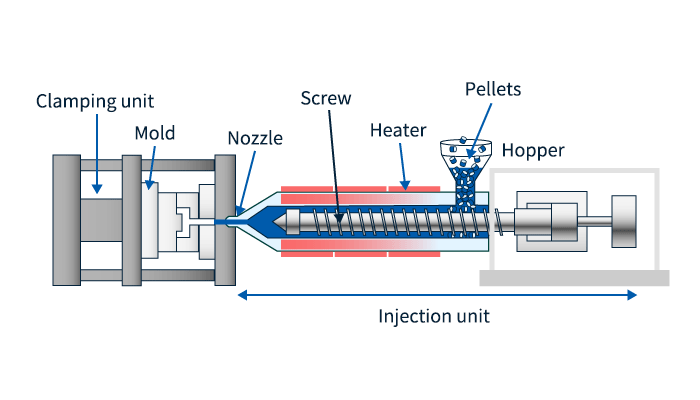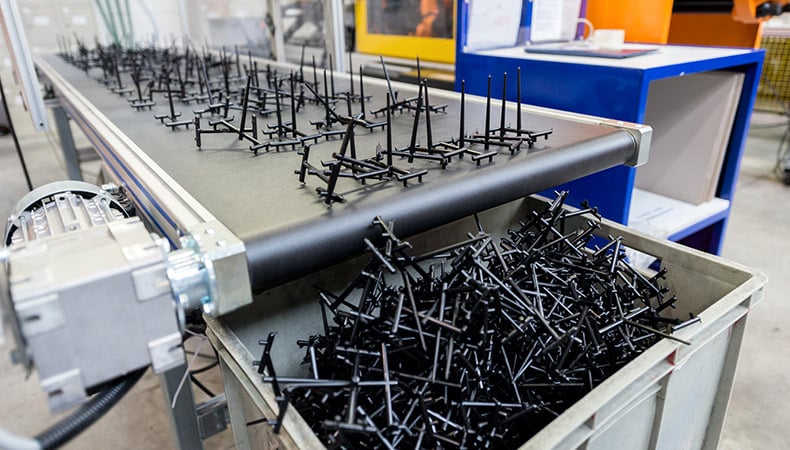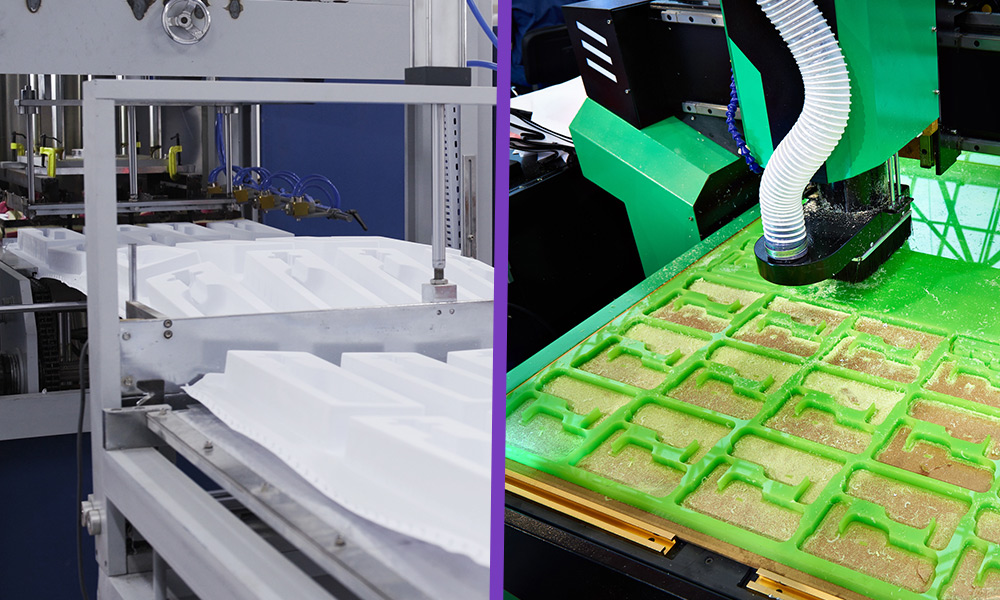The Advantages of Using Plastic Injection Molding for Personalized Components Production
The Advantages of Using Plastic Injection Molding for Personalized Components Production
Blog Article
Understanding the Fundamentals of Plastic Shot Molding Processes
Plastic injection molding offers as a keystone of modern manufacturing, supplying a systematic approach to producing complex elements with precision. This procedure not just incorporates the fundamental steps of melting and injecting products right into molds yet additionally entails a nuanced understanding of different influencing elements, such as temperature and pressure. As markets significantly require performance and quality, the complexities of this approach end up being much more essential. Discovering these essential elements could reveal just how even small changes can bring about substantial renovations in production outcomes, questioning about the potential for technology in this well-known procedure.
What Is Plastic Shot Molding?
Plastic shot molding is a widely used production process that changes thermosetting and thermoplastic products into specific and complex forms. This strategy is favored for its capacity to produce high volumes of the same parts with phenomenal accuracy, making it a crucial method in different sectors, including vehicle, durable goods, and medical tools.
The procedure involves melting the selected plastic product and infusing it right into a mold under high pressure. The mold and mildew, made to the specifications of the preferred component, permits the liquified plastic to form as it solidifies and cools. As soon as the product has actually hardened, the mold is opened, and the completed element is expelled.
Plastic shot molding uses numerous benefits, including reduced waste, uniformity in manufacturing, and the capacity to integrate detailed layouts that might be testing with various other making approaches. Additionally, it supports a broad variety of materials, each providing unique buildings that can be customized for details applications. As sectors proceed to introduce, plastic shot molding stays at the leading edge, allowing the growth of innovative items that satisfy progressing customer demands.
The Injection Molding Refine
The shot molding process is an advanced technique that involves numerous crucial phases to create high-quality plastic parts. Originally, plastic pellets are fed right into a heated barrel where they are thawed right into a viscous liquid. This molten plastic is after that infused under high pressure right into a precision-engineered mold and mildew, which forms the material right into the desired type.
Once the mold is filled, the plastic is permitted to solidify and cool down, taking the shape of the mold and mildew dental caries. Cooling time is essential, as it affects the cycle time and the last residential properties of the molded component. After adequate air conditioning, the mold opens up, and the completed element is expelled using ejector pins.

Products Made Use Of in Injection Molding
Different materials can be used in the injection molding process, each offering distinct residential properties that satisfy details applications. One of the most generally made use of products consist of thermoplastics, thermosetting plastics, and elastomers.

Thermosetting plastics, like epoxy and phenolic resins, undertake a chemical change throughout the healing process, leading to an inflexible, inflexible framework. These products are optimal for applications requiring high heat resistance and architectural integrity, typically made use of in electrical insulators and automobile components.
Elastomers, including silicone and rubber-based products, give flexibility and resilience. Their special buildings make them suitable for applications that demand elasticity, such as seals and gaskets.
Furthermore, specialized materials like bio-based plastics and view website composites are acquiring traction for their ecological benefits and improved performance attributes, widening the scope of shot molding applications in different markets. Recognizing the properties of these materials is essential for choosing the appropriate type for details projects.
Advantages of Shot Molding
Injection molding stands apart as a highly effective production procedure that uses numerous benefits for producing complicated get rid of accuracy. One of one of the most significant benefits is the capacity to produce elaborate layouts that would certainly be challenging or impossible to accomplish with other methods (Plastic Injection Molding). The procedure enables detailed attributes and tight tolerances, making sure top notch elements
Furthermore, shot molding is known for its fast production capabilities, making it an excellent choice for high-volume manufacturing. As soon as the mold is produced, components can be generated swiftly, minimizing lead times and enhancing general efficiency. This straight from the source effectiveness not only decreases production expenses but also gives an one-upmanship out there.
The adaptability of products utilized in injection molding find more information additionally boosts its allure. A wide variety of thermoplastics and thermosetting polymers can be employed, permitting producers to pick materials that ideal meet their details requirements, including flexibility, strength, and warm resistance.
In addition, the procedure minimizes waste, as excess material can often be reused and reused. This sustainability facet adds to a reduced environmental influence, making injection molding an accountable manufacturing selection. Overall, the benefits of injection molding make it a preferred technique for many industries.
Aspects Influencing Item Top Quality
While many variables can influence product high quality in injection molding, recognizing these components is vital for accomplishing ideal outcomes. Secret elements consist of product selection, refining specifications, and mold style.
Material choice plays an important role, as different polymers exhibit distinct residential or commercial properties that impact flowability, stamina, and thermal security. Inadequate material choice can result in problems such as bending or insufficient filling.
Processing specifications, including temperature, stress, and cycle time, have to be thoroughly controlled. Variants in these setups can result in incongruities in component dimensions and surface area finish. Exceedingly high temperature levels might trigger destruction of the polymer, while inadequate pressure can result in short shots.
Mold and mildew design is equally important, as it establishes the flow of the molten plastic and the cooling process. Inadequately developed mold and mildews may result in unequal cooling prices, causing recurring anxieties and dimensional inaccuracies.

Final Thought
To conclude, plastic injection molding functions as a vital manufacturing process that enables the effective manufacturing of high-quality parts. Mastery of the shot molding process, consisting of the understanding of materials and the influence of different aspects on product quality, is necessary for achieving ideal outcomes. The benefits of this technique, such as cost-effectiveness and design flexibility, further underscore its significance across multiple industries, strengthening its standing as a favored choice for high-volume manufacturing.
Plastic injection molding offers as a keystone of contemporary manufacturing, offering a systematic approach to producing intricate elements with precision.Plastic injection molding offers several advantages, consisting of decreased waste, uniformity in manufacturing, and the capability to include intricate layouts that may be challenging with various other manufacturing approaches (Plastic Injection Molding). As sectors continue to introduce, plastic shot molding continues to be at the leading edge, allowing the development of advanced items that fulfill developing consumer demands
The injection molding process is an innovative technique that entails several key phases to produce high-grade plastic elements.In verdict, plastic shot molding offers as an important manufacturing process that allows the effective manufacturing of top quality elements.
Report this page